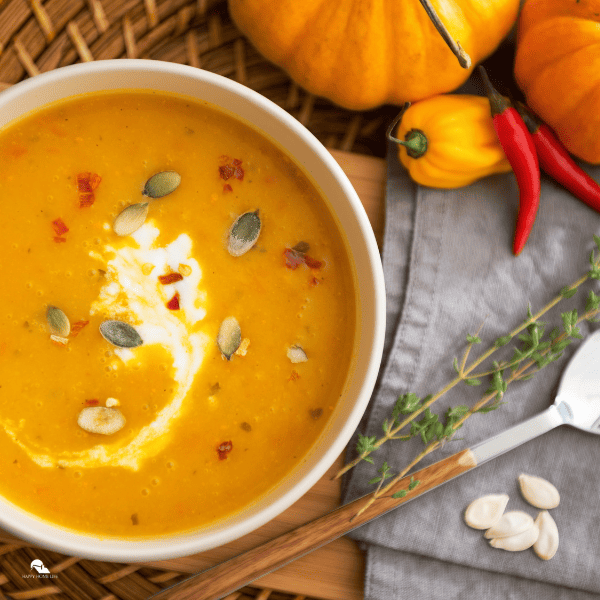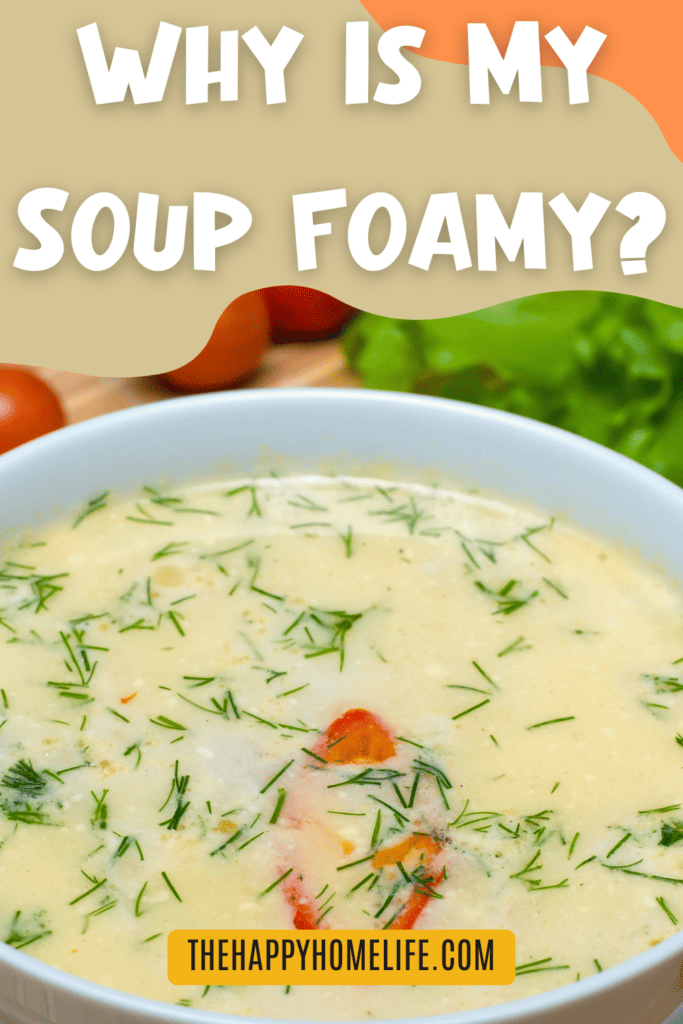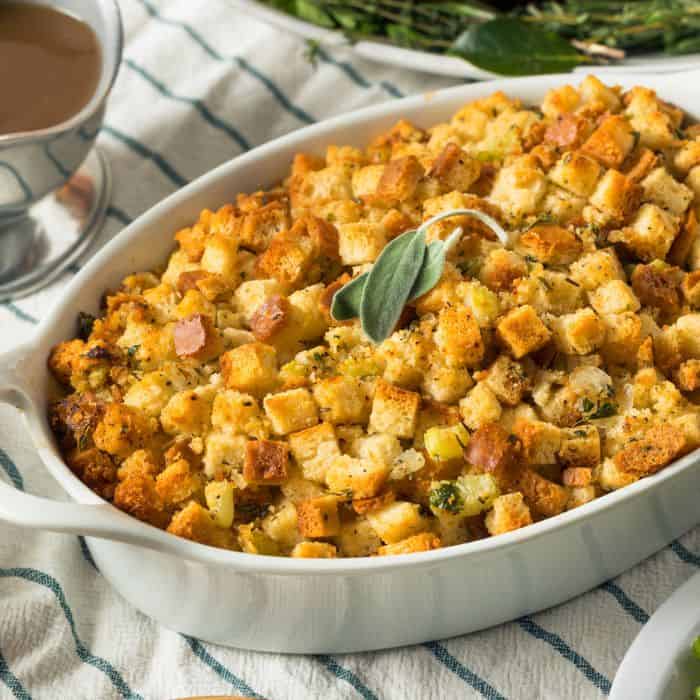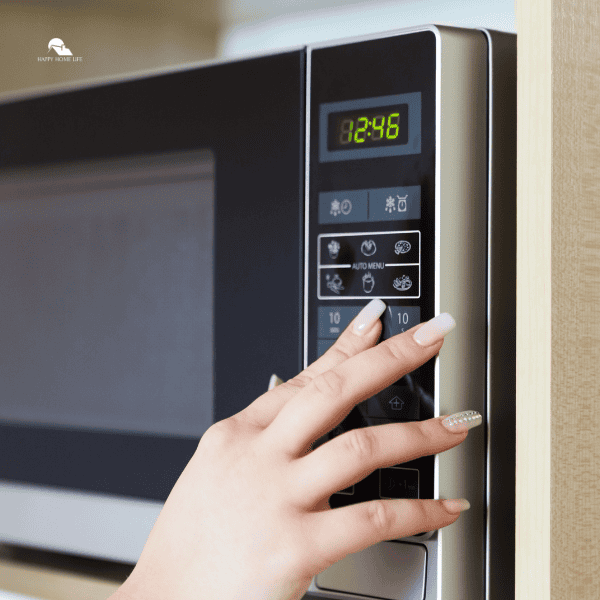Why is my soup foamy? Let’s find out! Soup is a beloved culinary creation enjoyed for its comforting warmth and rich flavors. However, there are instances when a seemingly unusual phenomenon occurs in your soup pot – the formation of foam. This unexpected foamy layer in soup can leave you wondering why it’s happening and if it’s safe to consume.
The presence of proteins, high-fat content, traces of detergent, or a rapid, rolling boil are some of the reasons of why your soup may foam. Let’s explore the common reasons behind foamy soup and shed light on whether it’s a cause for concern.

Protein Content
One of the most common reasons for foamy soup is the presence of proteins, such as albumin, in the ingredients. When proteins denature during cooking, they can trap air bubbles, creating foam. This is particularly noticeable when using ingredients like egg whites or meats with high protein content.
Boiling Vigorous
A rapid, rolling boil can introduce aeration into your soup, forming foam. To minimize this, try simmering your soup instead of boiling it vigorously. Simmering allows bubbles to rise gently to the surface.
Ingredients with High Fat Content
Fats can contribute to foamy soup, especially if they are emulsified into the broth. Cream-based soups, for instance, are prone to foam due to the fat content. Stirring or blending these soups can also exacerbate foaming.
Residual Detergents
If your utensils or cookware weren’t rinsed thoroughly or had traces of detergent, it might introduce foaming agents into your soup. Always ensure proper washing and rinsing to prevent this issue.
Frothy Ingredients
Certain ingredients, like egg yolks or dairy products, can contribute to foamy texture. If you’re using such ingredients, ensure they are incorporated smoothly into the soup to reduce foam.
Reaction with Acids
Acidic ingredients like tomatoes or wine can sometimes react with proteins, creating foam. Careful cooking techniques and proper ingredient combinations can help mitigate this.
In most cases, foamy soup is not a cause for concern and can be addressed through adjustments in cooking techniques or ingredient choices. However, if the foam is accompanied by a foul odor or unusual texture, it may be a sign of spoilage or contamination, in which case the soup should be discarded to ensure safety.

Is soup supposed to foam?
In general, a small amount of foam produced during the cooking process is typically normal and harmless. Foaming occurs when proteins in the soup, such as those found in dairy products or eggs, react with heat and agitation. These proteins denature and form bubbles, resulting in a foamy texture. In some recipes, this foaming effect is desired as it adds a light and airy quality to the soup.
However, excessive foaming can be a sign of issues. If a soup made with meat or poultry develops a thick layer of foam, it could indicate the presence of excessive fat or impurities. In such cases, it is advisable to skim off the foam to achieve a cleaner and more refined soup.
How do you get rid of foam in soup?
To get rid of foam in soup, you can try the following methods:
Skimming
The simplest way to remove foam is by skimming it off the surface with a spoon. Gently skim the foam as it forms, and continue until the soup is relatively foam-free.
Lower the Heat
Reduce the heat to a gentle simmer rather than a rolling boil. This will help prevent the soup from frothing and producing foam.
Add a Cold Liquid
If your soup is foaming due to rapid boiling, you can add a small amount of cold water or broth to the pot. This can help reduce the temperature and decrease foaming.
Use a Fat Skimmer
Fat skimmers are kitchen tools designed to remove foam and excess fat from liquids. They have a flat, perforated surface that allows you to skim off impurities efficiently.
Add a Dollop of Butter
Adding a small amount of cold butter to the soup and gently stirring it in can help reduce foam. The fat in the butter can trap some of the air bubbles.
Stir Carefully
Be mindful of your stirring technique, especially if you’re working with ingredients like cream or eggs, which can contribute to foam. Stir slowly and gently to prevent excessive aeration.
Avoid Overcrowding
Overcrowding the pot with ingredients can lead to increased foaming. Make sure there is enough space for the soup to simmer without overflowing.
Watch for Ingredients
Some ingredients, like tomatoes or wine, can contribute to foaming when they react with proteins. Pay attention to your ingredient choices and how they interact in the soup.
Is my soup bad if it has bubbles?
Your soup is not necessarily bad if it has bubbles. Bubbles or foam in soup can occur for various reasons and are not always a sign of spoilage or contamination. In fact, a small amount of foam during the cooking process is often normal and harmless.
The formation of bubbles or foam in soup is typically caused by proteins reacting with heat and agitation. This is particularly common when using ingredients such as dairy products or eggs, which contain proteins that tend to denature and create bubbles.
However, excessive foaming could be an indication of issues such as excessive fat or impurities in the soup. If your soup has a thick layer of foam on top, it may be a good idea to skim off the foam to achieve a cleaner and more refined final product.
Why is my soup foamy after blending?
When your soup becomes foamy after blending, it’s often due to the mechanical action of the blender introducing air into the mixture. As the blades of the blender spin, they incorporate air into the soup, causing it to foam.
This is particularly noticeable in soups with high protein content, like those containing legumes or certain vegetables. The blending process can denature proteins, allowing them to trap air bubbles, resulting in a foamy texture.
How do you get rid of foam after blending?
To get rid of foam after blending, you can try the following methods:
Settle and Skim
Allow the blended mixture to sit undisturbed for a few minutes. During this time, the foam will naturally rise to the top, making it easier to skim off. Use a spoon or ladle to remove the foam from the surface gently.
Strain
If the foam is persistent, you can strain the blended mixture through a fine-mesh sieve or cheesecloth. This will help separate the foam from the liquid, leaving you with a smoother consistency.
Adjust Techniques
While blending, you can also try adjusting your techniques to minimize foam formation. Blend at a lower speed, pulse in short bursts, or use a tamper to push down any ingredients that tend to create excessive foam.
Add Ingredients
Adding certain ingredients can help reduce foam. For example, a small amount of fat, such as butter or oil, can help stabilize the mixture and prevent excessive foaming.
Chill or Heat
Depending on the recipe, chilling or heating the blended mixture can help reduce foam. Cooling the mixture in the refrigerator allows the foam to settle and solidify, making it easier to remove. On the other hand, gently heating the mixture can cause the foam to break down and dissipate.
Remember, the effectiveness of these methods may vary depending on the specific ingredients and recipe you are working with. It’s always a good idea to experiment and find the technique that works best for your particular blending needs.







